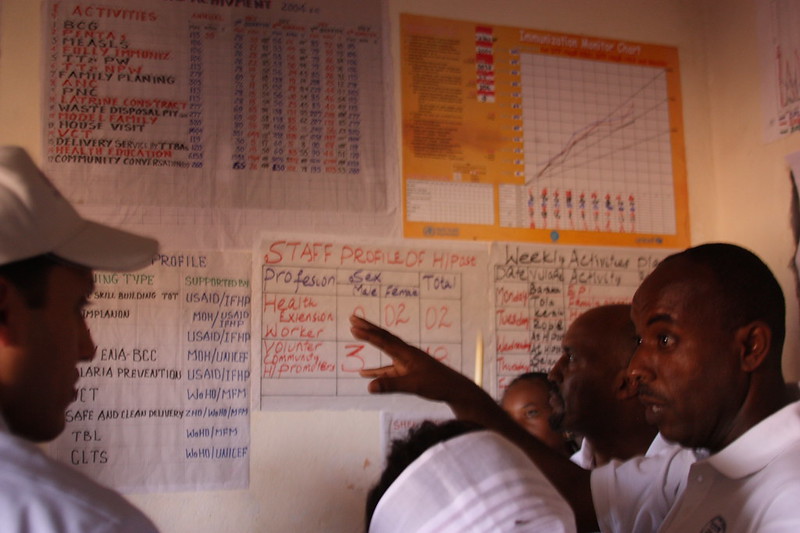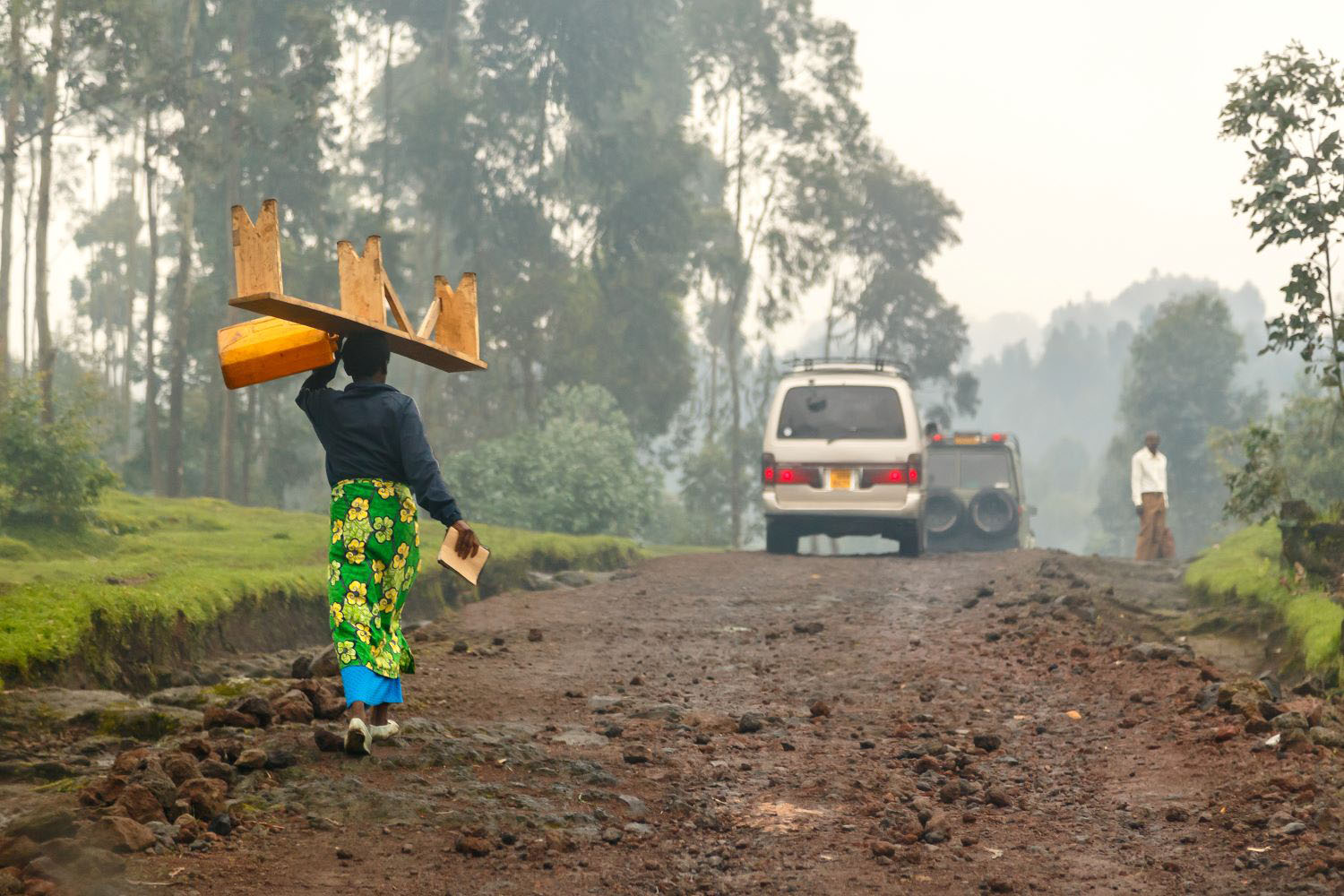Like others, we’ve written lots about Ebola over the past weeks: the insufficient funding and effort to the response in West Africa, the importance of well-qualified leadership at WHO, the role of health systems in disease response, the futility of travel bans, among others. It’s rare that global health issues are so continuously in the public debate.
Yet Ebola has also led to heroic overstatement as well. Sisonke Msimang recently wrote a piece that the spread of Ebola in Liberia is a result of a failure of aid and governance. Gyude Moore (our former Scott Fellow and current deputy chief of staff to Liberia’s president Sirleaf) disagrees: the evidence shows that both public and aid monies improved health and health services quite dramatically in the post-war period. Those improvements include a 68 percent drop in infant and under-five mortality rates over 20 years, a large decrease in the incidence of malaria, and greater availability of doctors throughout the country, as Moore explains below. Leadership and governance conditions improved as well, but those dramatic improvements were just not enough to cope with the unprecedented urban outbreak of Ebola.
Gyude Moore writes that the conversation around—and money for—Ebola needs to consider the long-term improvements to health systems so that countries like Liberia can better fight against the next epidemic. With donor disbursements and pledges already exceeding the immediate needs for the Ebola response, I couldn’t agree more.
But don’t take my word for it; here it is in his own words:
Before Ebola
At the end of the Liberian civil war, a health-care system that, in its prime, had over 3,000 doctors was left with fewer than 15 physicians and was largely manned by NGOs. The significant distance people traveled to see health practitioners who rarely had adequate drugs or equipment resulted in deaths from treatable conditions, and high maternal and infant mortality rates. In 2006, restoring basic health and training a cadre of Liberian health practitioners to run the nascent system became the number-one priority.
And there was progress. By 2012, the number of citizens living within five kilometers of a health facility had increased from about 31 percent in 2006 to 71 percent. The number of health facilities had increased from 354 to over 550. All of the country’s 15 political subdivisions had a government-run hospital with a Liberian doctor in charge as opposed to only eight in 2006, with only three Liberian doctors. Services and drugs at these facilities are free. Infant and under-five mortality rates dropped by 68 percent from 1990 to 2010. The incidence of malaria dropped from 66 percent in 2005 to 32 percent in 2009 and 28 percent in 2011.
Vis-à-vis the conditions they were intended to remediate, these health gains were impressive, but in reality it was all still rudimentary and fragile. Having 51 doctors is only impressive when compared to eight from 2006, not when one considers that 51 are responsible for a population of over 4 million. It was a fragile system and then came Ebola.
Ebola
The system described above was barely enough to contain malaria, typhoid, TB, HIV, diarrhea, and respiratory diseases, all of which showed remarkable signs of decreasing. It was never created for or was it able to contain and resolve Ebola. Naturally, at the very onset of the outbreak, the system’s limits were breached. Worse still, the disease attacked health-care workers, killing them in frightening numbers and ushered an understandable exodus from health facilities across the country.
To make matters worse, this system had no reason or basis to think “Ebola” when the outbreak started. In public health, practitioners are encouraged to think horses when they hear hooves, not to imagine zebras or unicorns. They are encouraged to look for prevalent and common diseases. While there had never been an Ebola outbreak in West Africa, malaria, cholera, and typhoid are, however, common. And in its beginning stages Ebola mimics the symptoms of these common illnesses. Even when it became clear that we were dealing with something new, the next obvious suspect was Lassa fever, which also mimics these symptoms. This line of thinking was encouraged by the fact that Liberia, Guinea, and Sierra Leone have the highest incidence of Lassa fever in the region.
When the dreaded Ebola virus disease was eventually identified as the culprit we were overwhelmed. By then, infected persons had sought care in all the usual places—traditional healers, health practitioners who saw patients in their homes, prayer-healers who laid hands on the sick and applied holy oil and water, and small community clinics which are usually understaffed. Many sick persons stayed home, self-medicating as other family members attended to them. In the three-week incubation period of the virus, multiple members of families, entire households, and whole communities were infected. In a month, the largest ever outbreak of the disease had reached Monrovia with its densely populated areas and extensive shantytowns. Ebola had, for the first time, become an urban epidemic. This had nothing to do with the competence of the leadership of the country, or with cronyism. Liberia, like Guinea and Sierra Leone, had conditions that, rather unfortunately, made it fertile ground for the spread of a wily and virulent virus.
Aid
Then there’s the charge of Liberia’s aid dependence. When a country has experienced a 90 percent decline in GDP over the course of a war—the largest ever such decline measured since World War II—is it remarkable that said country is aid dependent barely a decade after the end of the war? And even before the decline, this was an economy which leaned disproportionately on mining and logging, industries that operated in silos outside the larger economy. With those sectors as yet underdeveloped, Liberia needs aid not as a matter of choice but necessity.
And that “aid” needs to be disaggregated. When a writer notes that 73 percent of Liberia’s GNI comes from “aid agencies” and that Liberia receives “800 million” in foreign assistance, without providing context, it distorts the picture. Since 2010 when Liberia completed its HIPC requirements and received debt waiver, “aid” has largely come in the form of loans—albeit concessional loans.
These are bilateral and multilateral concessional loans contracted to build roads, bridges, ports, electricity infrastructure—the backbone on which the collapsed Liberian economy would be revived—and to expand agricultural outputs. It should not be fair for a country with over 10,000 km of roads and less than 10 percent paved, to get criticized and penalized for borrowing to correct this problem. Liberia is not an example of the failure of “aid.”
The Liberian government moved quickly once Ebola was identified in the country. It immediately established a National Ebola Trust Fund with its own resources and began responding to the crisis. The government also took steps to reduce the transmission such as closing schools, ending nonessential government work, disinfecting public buildings, introducing hand washing stations, running public-service announcements, and conducting community outreach. Ebola is, however, a very expensive disease and requires specialized training to contain. It exploited long-held traditions and customs to spread and understandably people initially resisted the implication that their traditions were at the root of the spread of the disease. Disbelief was more complex than simply “distrust of government.”
The virus thus presented hard limits to what the government could do, especially when the deaths of health-care workers cast a pall over the system. The suggestion that UNMIL could have used its 7,500 troops to contain the virus displays unfamiliarity with Ebola or how it is contained. Isolating Ebola patients is not simply about moving chlorine and transporting the sick. Ebola Treatment Units (ETUs) are specialized facilities, where the flow has to follow strict infection control protocols, lest the virus spread. Tens of medical professionals and hundreds of hygienists are required, burial teams have to be trained. Then there’s the exacting logistics of managing an ETU. There was a single patient in Dallas and the virus spread—imagine caring for hundreds. There is also the small matter of paying ETU workers and burial teams hazard pay for the dangerous work they do. As I noted elsewhere, there are hard limits of what this or any similarly resourced government could have done.
We welcome a substantive conversation about Africa’s public health crisis. It is true that epidemics occur and are spread because of crushing poverty. I therefore agree that to think of the current outbreak simply in terms of containing an epidemic is to lay the ground work for the next outbreak. Ghana, Côte d’Ivoire and other West African neighbors should be learning from Nigeria. We should be reassessing long-term health delivery systems in the affected countries. We should invest in a 30-minute Ebola test and should have those available even at the community health worker level. These activities will require significant investment from national treasuries and the international community. This… this is the conversation we need now.
Disclaimer
CGD blog posts reflect the views of the authors, drawing on prior research and experience in their areas of expertise. CGD is a nonpartisan, independent organization and does not take institutional positions.





